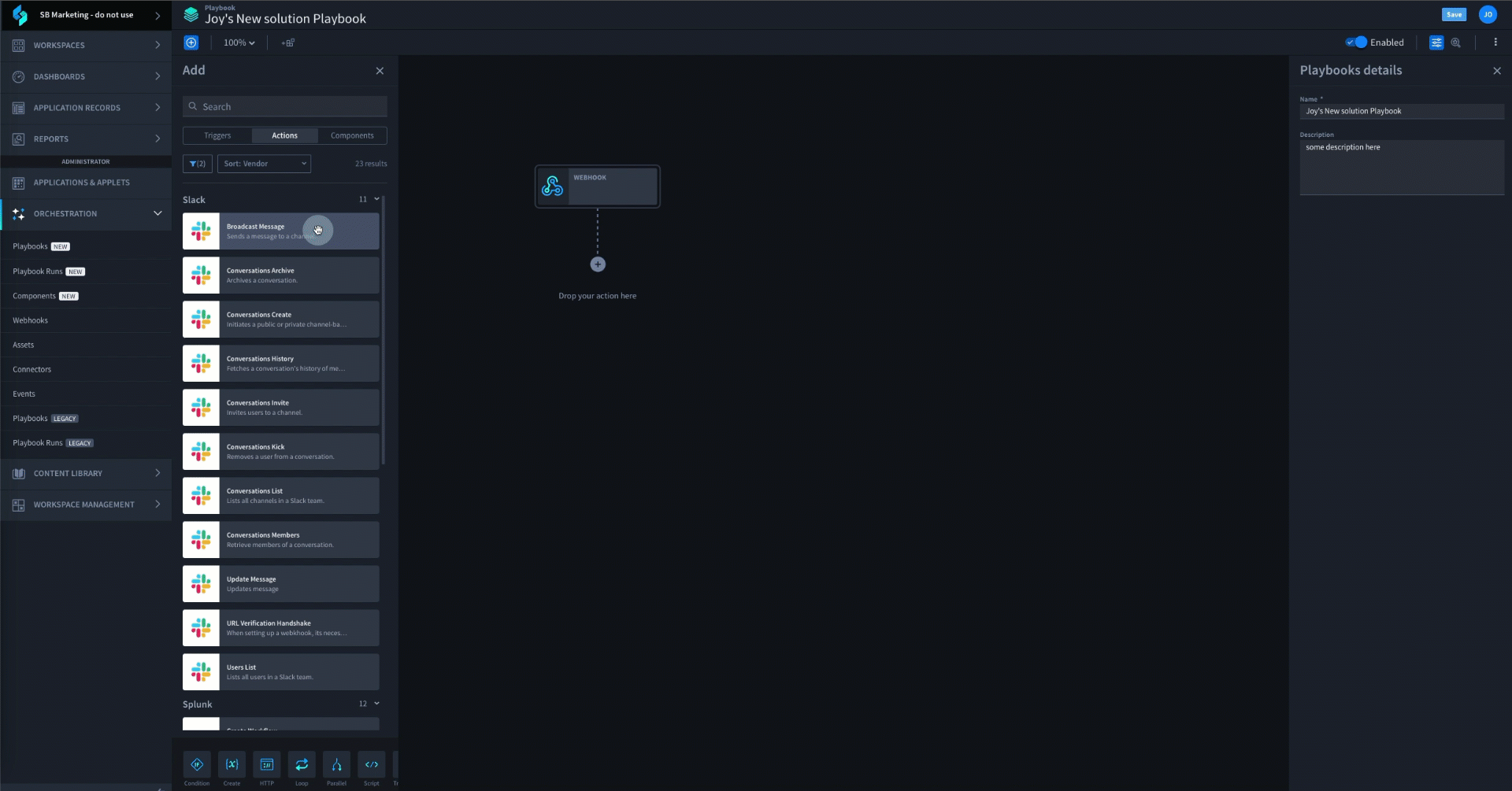The surge in digital threats has propelled the market to introduce an array of security solutions. But the burning question remains: are these solutions robust enough to detect vulnerabilities and effectively mitigate risks? Let’s delve into the realm of threat detection and incident response, commonly known as TDIR, to find the answers.
So, what exactly is TDIR? Evolving from its predecessor TDR, TDIR encapsulates the entire process of network threat detection and incident response, a methodology that seamlessly integrates traditional Security Operations Center (SOC) capabilities, elevating the security process to new heights.
But just like the interminable risk in the digital world, TDIR becomes a never-ending improvement journey, and tools like XDR , SIEM and SOAR are crucial to keeping up with the onslaught of cyber threats.
What is Threat Detection?
But before we get into the solutions to TDIR, let’s break down the first half of this dynamic duo: Threat Detection. Akin to a cybersecurity radar scanning for potential dangers, threat detection refers to the process of identifying and analyzing potential insider threats and different types of cybersecurity attacks or malicious activities that could compromise the security of an organization’s IT environment.
This proactive approach aims to detect unauthorized access, vulnerabilities, and abnormal behaviors that may indicate a security breach. Threat detection involves continuous monitoring of network data, applications, and other assets to identify signs of compromise and potential risks.
The Different Types of Threat Detection
Threat detection encompasses various methods to identify potential cybersecurity risks. Here are four types of threat detection:
1. Signature-Based Detection:
- Utilizes predefined patterns or signatures to identify known threats.
- Commonly used in antivirus software.
- Limitation: Ineffective against new or evolving threats.
2. Behavioral Analysis:
- Examines patterns of behavior to detect anomalies.
- Focuses on deviations from normal system or user behavior.
- Effective in identifying previously unknown threats.
3. Machine Learning-Based Detection:
- Employs algorithms to analyze data and learn patterns.
- Adapts to evolving threats by continuously improving its understanding.
- Enhances accuracy in detecting complex and dynamic threats.
4. Threat Intelligence:
- Involves monitoring external sources for information on emerging threats.
- Integrates external threat data to enhance detection capabilities.
- Enables proactive defense against known threats.
What is Incident Response?
Now, the other half of TDIR – incident response, the organized and strategic approach taken by organizations in response to cybersecurity incidents found in the threat detection phase. It involves a set of procedures aimed at detecting, managing, and mitigating the impact of cyber attacks to minimize damage, recovery time, and overall costs. It does this by:
- Identifying and containing the incident
- Eradicating the threat
- Recovering affected systems
- Conducting a thorough post-incident analysis to enhance future incident handling
In simpler terms, incident response (IR) is the process where a dedicated team utilizes frameworks and tools to streamline and enhance security response efforts.
The Steps of Incident Response
An established incident response is paramount to streamlined security and improved outputs. But, of course, every organization is unique. And the same goes for incident response in cybersecurity, where there are different metrics and frameworks in consideration.
While well-known organizations have their own set of IR approaches and common solution methods, it all boils down to six major phases. Let’s take a look at the six steps of incident response:
- Planning: Every process starts with preparation. IR teams craft essential policies, playbooks, and deploy the right tools to ensure they are ready for any security challenge that comes their way.
- Detection: Moving swiftly into action, the detection phase puts a spotlight on the crucial task of threat identification. Employing effective detection strategies, the team sifts through data to pinpoint, assess, and validate potential security incidents.
- Containment: Upon spotting a security threat and validating its existence, the focus shifts to containment. A well-thought-out incident response plan is activated, aiming to limit the damage and swiftly regain control of the system.
- Eradication: With successful containment achieved, the eradication phase kicks in to eliminate all traces of threats. This involves wiping out malicious user accounts and thoroughly assessing vulnerabilities that may have been exploited.
- Recovery: When it’s time to bounce back, the recovery phase begins and is all about restoring normal operations. IR teams take strategic steps to mitigate risks and vulnerabilities, ensuring the system gets back on its feet.
- Remediation: Closing the chapter, the remediation phase is where lessons are learned. Despite the potentially severe breach consequences, the team conducts a thorough review—from identifying security loopholes to scrutinizing potentially outdated policies. It’s not just about recovering; it’s about evolving and fortifying against future threats.
How Has TDIR Evolved From TDR?
Threat detection and incident response stems from the shortcomings of TDR. TDIR offers greater coverage across functionalities, which allows a more established security plan and fewer security risks and breaches in the future. So, it has evolved from just threat detection and response to now threat detection and incident response.
The small change might appear to be insignificant and can be overlooked, but it’s actually monumental. With incident response in the equation, key areas like eradication, recovery, and recovery take place.
The Impact of Threat Detection and Incident Response
The relevance of TDIR extends beyond identifying vulnerabilities and responding to cyber-attacks. It’s a full-scope process that impacts the businesses overall, from the financial side to the management aspect. With TDIR, all systems and networks can be kept in a safe state.
And of course, technology influences the growing need for better TDIR tools. Cyber threats continue to multiply and the only thing to combat these risks is to have a secure infrastructure and reliable security framework.
What Threats Does TDIR Identify and Prevent?
The cyber landscape is overwhelmed with threats, lurking around and simply waiting for the next target. Even with the breadth and complexity of these risks, a reliable TDIR playbook platform does the job of securing the system from these possible terrorizations. Some of the widely popular cyber threats include:
- Ransomware
- Malware
- DDoS attacks
- Phishing
- Worms
Apart from the typical cyber attacks, there are also more ingenious attack campaigns that create an added risk to companies. Advanced Persistent Threats or APT are highly sophisticated and sustained crusades that easily dodge security measures. These are backed by high-level hackers, shaping up a more complex breach in the system.
Threat Detection and Incident Response Tools
Over the years, tools that support TDIR have evolved, with the changes largely influenced by the modifications in the digital landscape and the modernization of threats that fly under the radar. XDR , SIEM and SOAR are some of the most common technologies that revolve around the TDIR methodology. Each comes with specializations in securing the infrastructure, though they also overlap in certain areas.
XDR (Extended Detection and Response)
XDR delivers a solid action plan in terms of threat detection and investigation through correlating data across different security layers. These include information gathered from endpoints, cloud workloads, networks, servers, and the like. Through detailed security analysis, it optimizes response times and improves investigation.
SIEM (Security Information and Event Management)
SIEM supports the key frameworks of TDIR, particularly threat detection and security management. It works on the in-depth collection and analysis of security information to identify potential threats before reaching the system. This modern technology utilizes various sources to see any deviations from the norm and take necessary actions.
SOAR (Security Automation, Orchestration and Response)
SOAR tools combine incident response, orchestration, automation, and threat intelligence capabilities in a single feature set. Modern SOC teams have outgrown SOAR tools and now opt for AI-enabled security automation platforms for their SOAR and TDIR use cases. Security automation platforms are an effective TDIR tool, speeding up the mitigation process significantly due to their flexible and scalable approach to automating incident response, adding detailed context to incident data, and unifying all elements of the Security Operations Center (SOC).
Improve Threat Detection and Incident Response With Swimlane
Cultivating a strong team of professionals is simply not enough to battle the current cyber attacks and the emerging threats in the industry. Every enterprise, especially bigger ones, needs dedicated and advanced tools to resolve security issues and streamline processes efficiently.
For this reason, a central mission of Swimlane is to secure organizations from vulnerabilities and breaches and to optimize core security procedures. Swimlane Turbine is the first and only AI-enabled security automation platform that is redefining SecOps processes through low-code threat detection and response solutions.
To improve the overall SOC workflow and employee retention, why not let automation shoulder some of the burden? You might be surprised that 80% of established response processes can actually be automated. Respond to critical events quicker, minimize risk exposure, and let people work on more relevant activities with reliable TDIR solutions from Swimlane.

Request a demo
If you haven’t had the chance to explore Swimlane Turbine yet, request a demo.


